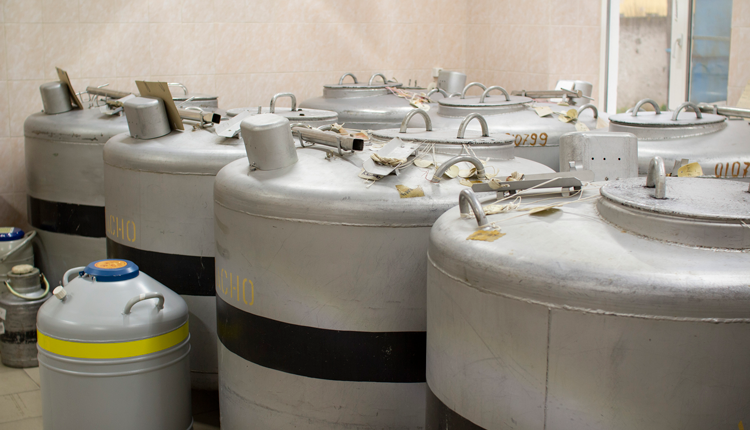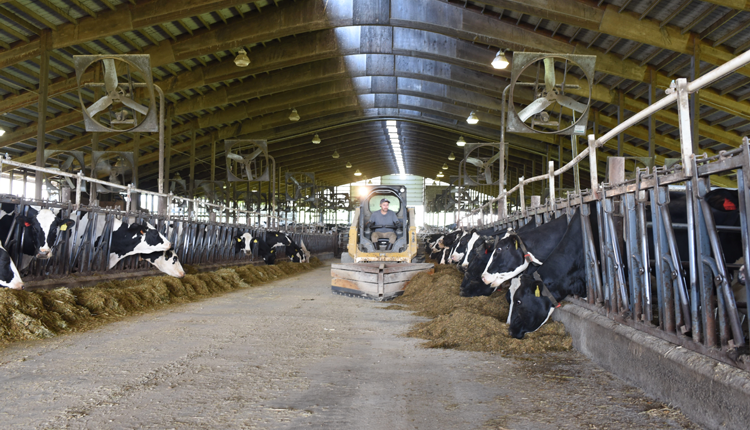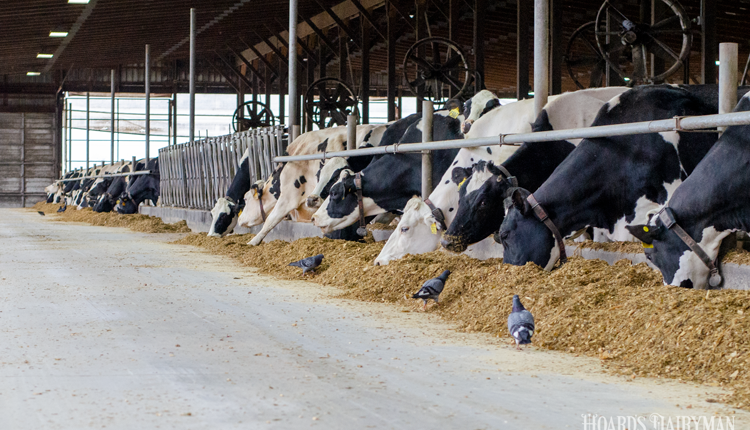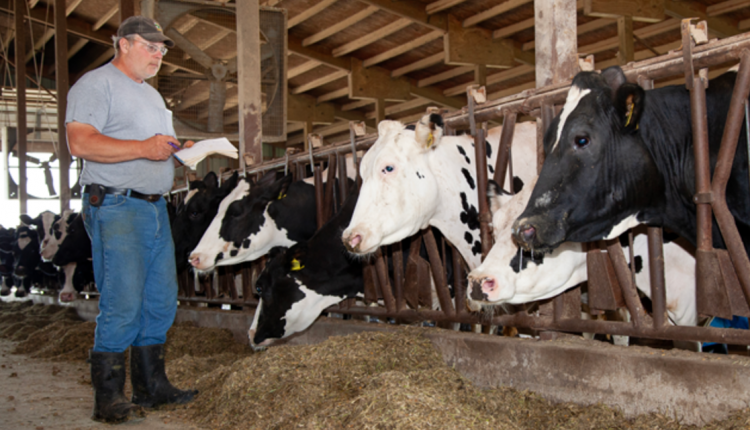
Many dairy farms have successfully tackled the question of how to find additional revenue streams when other family members want to join the business. Some operations add cows, others expand their land base, and a growing number take the leap into dairy product processing.
The Goodrich family of Salisbury, Vt., chose a path that was a bit different — they installed a phosphorus management system and what is now the largest anaerobic digester in New England.
Danielle Goodrich Gingras joined the August 18 Hoard’s Dairyman DairyLivestream to discuss her family’s journey through the process of expanding the dairy’s enterprises. She and her brother, Chase, returned to the home farm in 2009 after they both graduated from college and took over the operation from their father, Ernie.
“As soon as we came back, we knew we needed to come up with some long-term goals that were going to make us viable and sustain our farm for years to come,” Gingras explained. They also knew that they wanted to be a valuable member of their community, not only by producing high-quality and nutritious dairy products, but by having a positive impact on their environment. The farm is not far from Lake Champlain, a freshwater lake that makes up part of Vermont’s border with New York and also reaches into Canada.
A positive partnership
Goodrich Farm is also only about 7 miles from Middlebury College, which was interested in powering its campus with renewable natural gas (RNG) around the same time the siblings took over the business. One of Gingras’ professors from Vermont Technical College thought her family’s farm could be a great fit for that need and connected them with the RNG developer.
Understandably, there were doubts in the early conversations. “There was some risk in taking this leap,” Gingras admitted. “We were completely out of our element, and we knew it was going to be a long construction and permitting process. We knew that we would continue to have to mold our farm around this project no matter how long this took.”
However, the more they talked with their eventual partners on the project — Vanguard Renewables, Vermont Gas, and Middlebury College — they felt they had made the right choice. Their goals for the project were in line, and the other partners recognized the value of the farm to the whole system, both of which were extremely important to Gingras and her family. It also allowed each organization to do more than they would have singularly.
“We were so excited to embark on this journey that was so environmentally beneficial but allowed us to do what we came home to do, which was work with our family and care for our cows and land,” Gingras said. She noted that especially at first, the scope and details of the project were a little overwhelming.
“It made me extremely grateful and lucky that my part in this project was to continue to do what I did best, and that was take care of my cows and make sure that I was continuing to provide manure for the project. For me, that was easy enough.”
Cutting costs
The farm had already added cows before the siblings came back, and today, they are milking about 900 cows and farming 2,400 acres. The digester processes 100% of the manure produced on the farm as well as food waste.
In addition to the RNG, it produces about 80,000 tons each year of low-carbon, low-odor digestate. This, along with the phosphorus removal system, allows the farm to apply nutrients to their fields more precisely and purposefully. “Knowing that we’re contributing to cleaner water for the next generation is extremely humbling,” Gingras described.
Those tools are already saving the farm about $200,000 a year in fertilizer costs, with the ultimate goal of eliminating 80% to 85% of commercial chemical use. But the benefits don’t stop there. “My favorite part of the project is the bedding, the separated solids that come from the manure,” herd manager Gingras said. Cows are comfortable, and somatic cell counts have remained low. Without having to worry about purchasing sawdust, they are saving about $50,000 a year and are able to bed stalls more frequently because the solids are readily available.
And of course, there are the environmental benefits of mitigating methane emissions and conserving nutrients. That’s the overarching accomplishment Gingras is proud of, and what earned them a U.S. Dairy Sustainability Award this year.
“We took a position of wanting to be the best stewards of the land as possible, and this digester allows us to do that,” she said. “We wanted to work on tackling climate change, and we knew the best place to start was right at the community level and using things that we had an abundance of, which was waste.”
To watch the recording of the August 18 DairyLivestream, go to the link above. The program recording is also available as an audio-only podcast on Spotify, Google Podcasts, Apple Podcasts, and downloadable from the Hoard’s Dairyman website.
An ongoing series of events
The next broadcast of DairyLivestream will be on Wednesday, September 15 at 11 a.m. CDT. Each episode is designed for panelists to answer over 30 minutes of audience questions. If you haven’t joined a DairyLivestream broadcast yet, register here for free. Registering once registers you for all future events.






